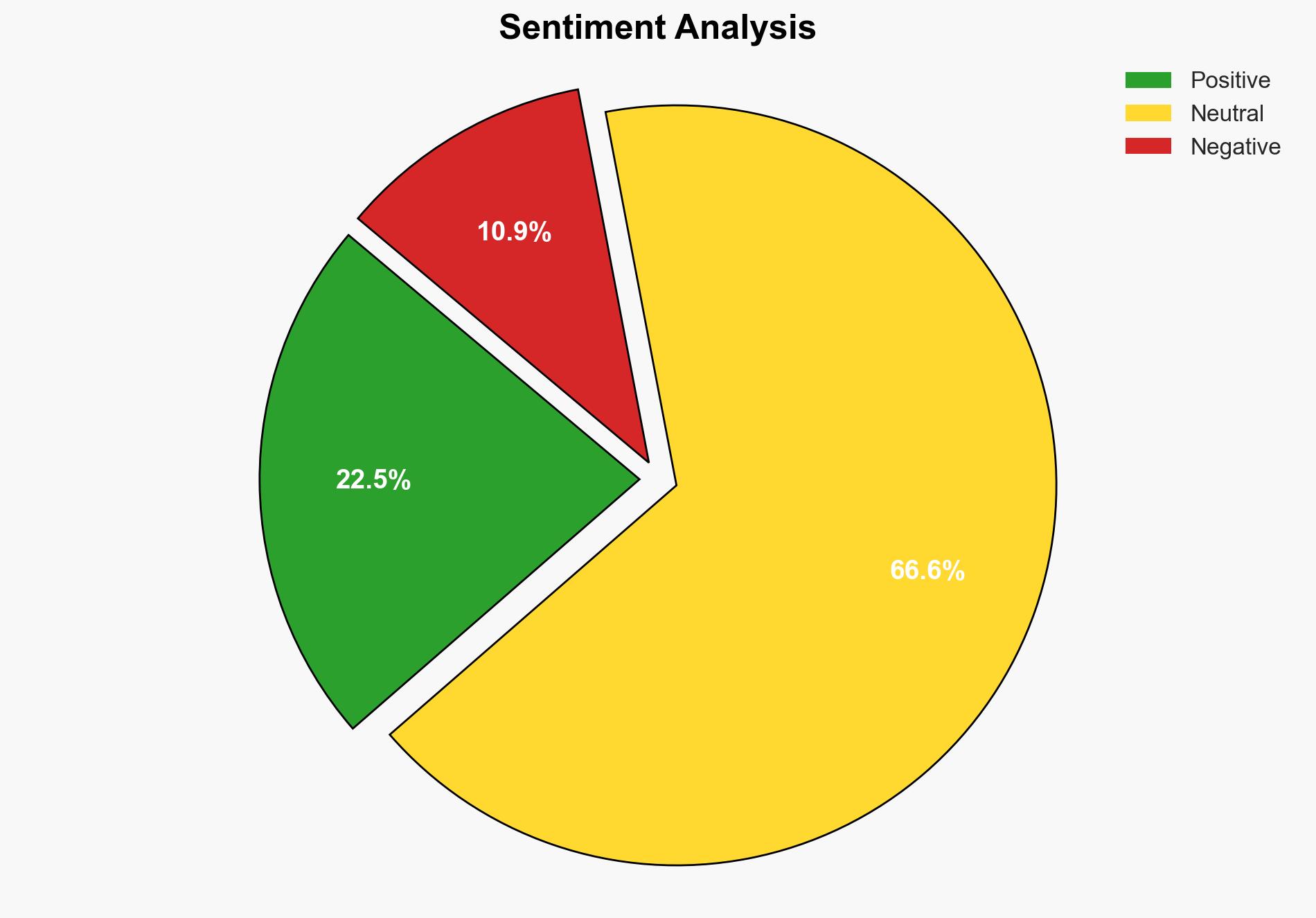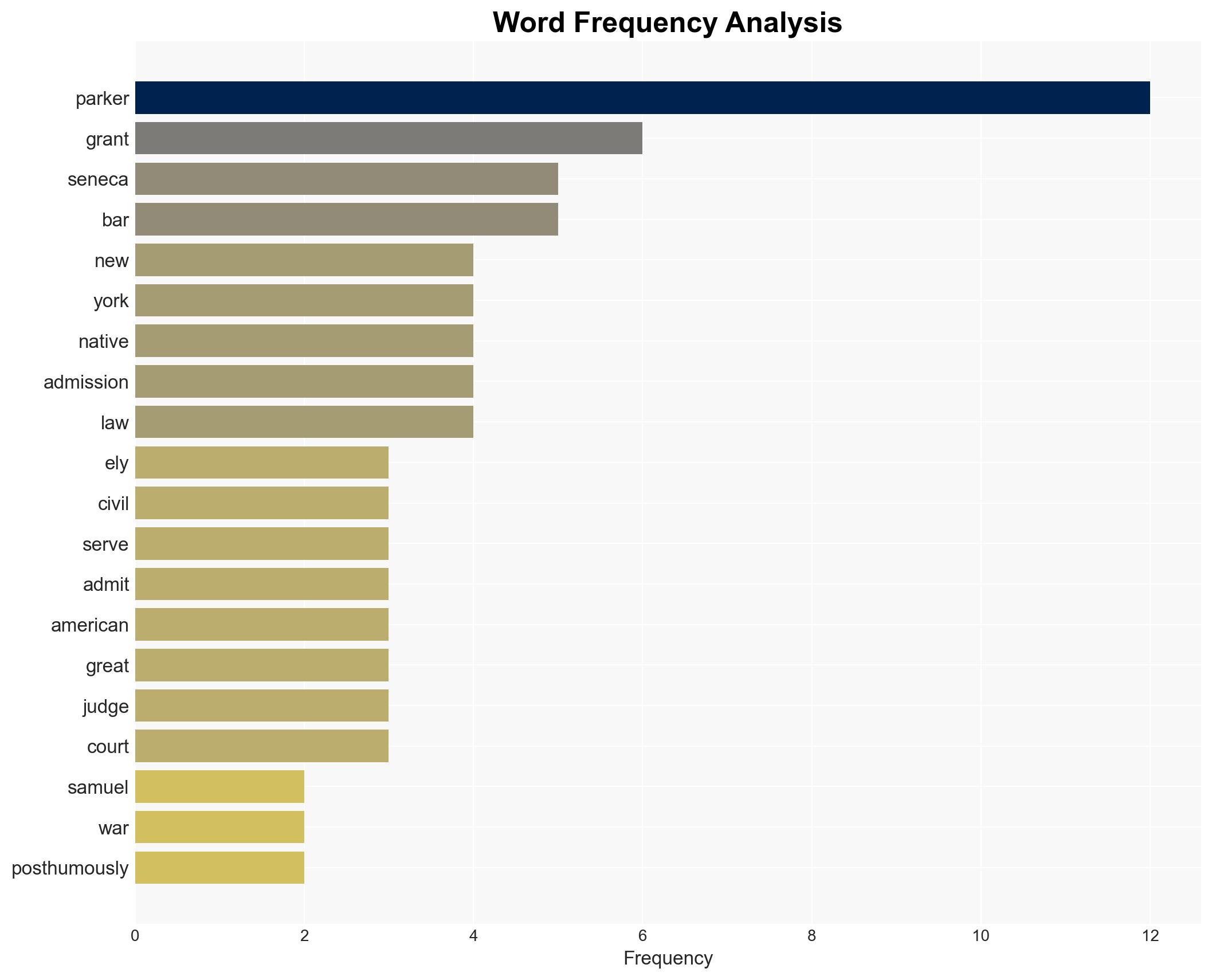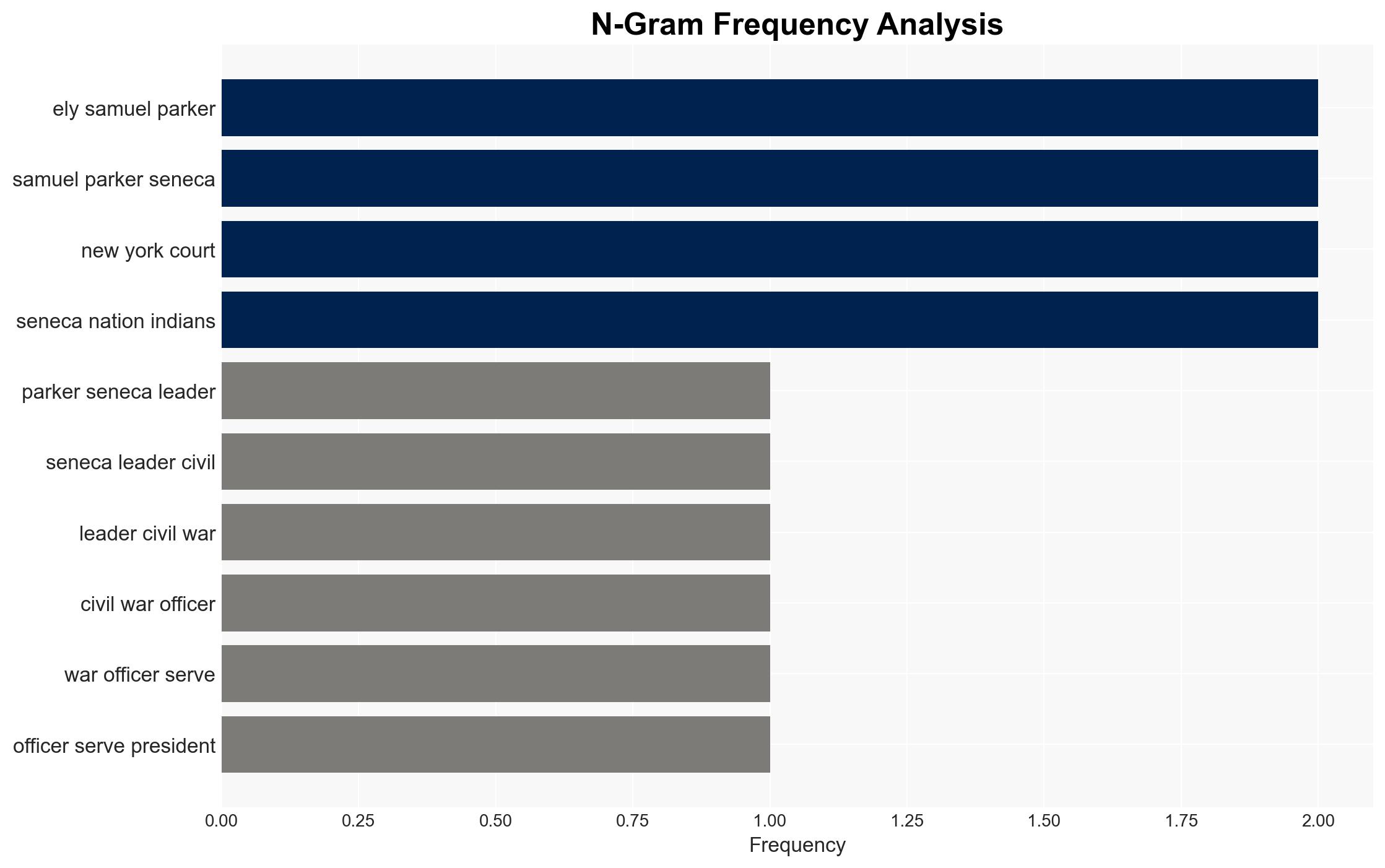The lawyer who literally wrote the legal terms for the end of the Civil War is finally a member of the New York State Bar 130 years after his death – Fortune
Published on: 2025-11-15
AI-powered OSINT brief from verified open sources. Automated NLP signal extraction with human verification. See our Methodology and Why WorldWideWatchers.
Intelligence Report:
1. BLUF (Bottom Line Up Front)
With a moderate confidence level, the most supported hypothesis is that Ely Samuel Parker’s posthumous admission to the New York State Bar serves as a symbolic correction of historical injustices against Native Americans, potentially influencing contemporary legal and social frameworks. Recommended actions include leveraging this event to promote broader awareness and reform regarding Native American rights and representation in legal and governmental institutions.
2. Competing Hypotheses
Hypothesis 1: Parker’s admission is primarily a symbolic gesture aimed at correcting historical injustices and has limited impact beyond its ceremonial significance.
Hypothesis 2: Parker’s admission could catalyze broader legal and social reforms concerning Native American rights and representation, serving as a precedent for addressing similar historical grievances.
Hypothesis 2 is more likely given the current socio-political climate that increasingly values historical rectification and inclusivity, evidenced by ongoing efforts to address systemic biases and the symbolic significance of Parker’s achievements.
3. Key Assumptions and Red Flags
Assumptions: The assumption is that the symbolic act of Parker’s admission will resonate with broader audiences and influence policy. It is also assumed that there is a genuine commitment to rectify historical injustices.
Red Flags: Potential overestimation of the event’s impact on legal reforms. The ceremonial nature might overshadow substantive policy changes. There is also a risk of tokenism if not followed by concrete actions.
4. Implications and Strategic Risks
The event could lead to increased advocacy for Native American rights, potentially influencing legislative agendas. However, there is a risk of backlash from groups opposing changes to historical narratives or those who perceive such actions as unnecessary. Failure to follow through with substantive reforms could lead to disillusionment among Native American communities.
5. Recommendations and Outlook
- Engage with Native American leaders to identify and prioritize areas for legal and social reform.
- Monitor public and political reactions to gauge the potential for broader policy changes.
- Best Scenario: Parker’s admission leads to significant legal reforms and improved representation for Native Americans.
- Worst Scenario: The event remains purely symbolic, with no substantive changes, leading to increased frustration among Native American communities.
- Most-likely Scenario: The event raises awareness and initiates discussions, but tangible reforms require sustained advocacy and political will.
6. Key Individuals and Entities
Ely Samuel Parker, Melissa Parker Leonard, Judge Gerald Whalen, John Browning, Lee Redeye.
7. Thematic Tags
National Security Threats, Historical Justice, Native American Rights, Legal Reform, Symbolic Acts, Social Advocacy
Structured Analytic Techniques Applied
- Cognitive Bias Stress Test: Expose and correct potential biases in assessments through red-teaming and structured challenge.
- Bayesian Scenario Modeling: Use probabilistic forecasting for conflict trajectories or escalation likelihood.
- Network Influence Mapping: Map relationships between state and non-state actors for impact estimation.
Explore more:
National Security Threats Briefs ·
Daily Summary ·
Support us
·





